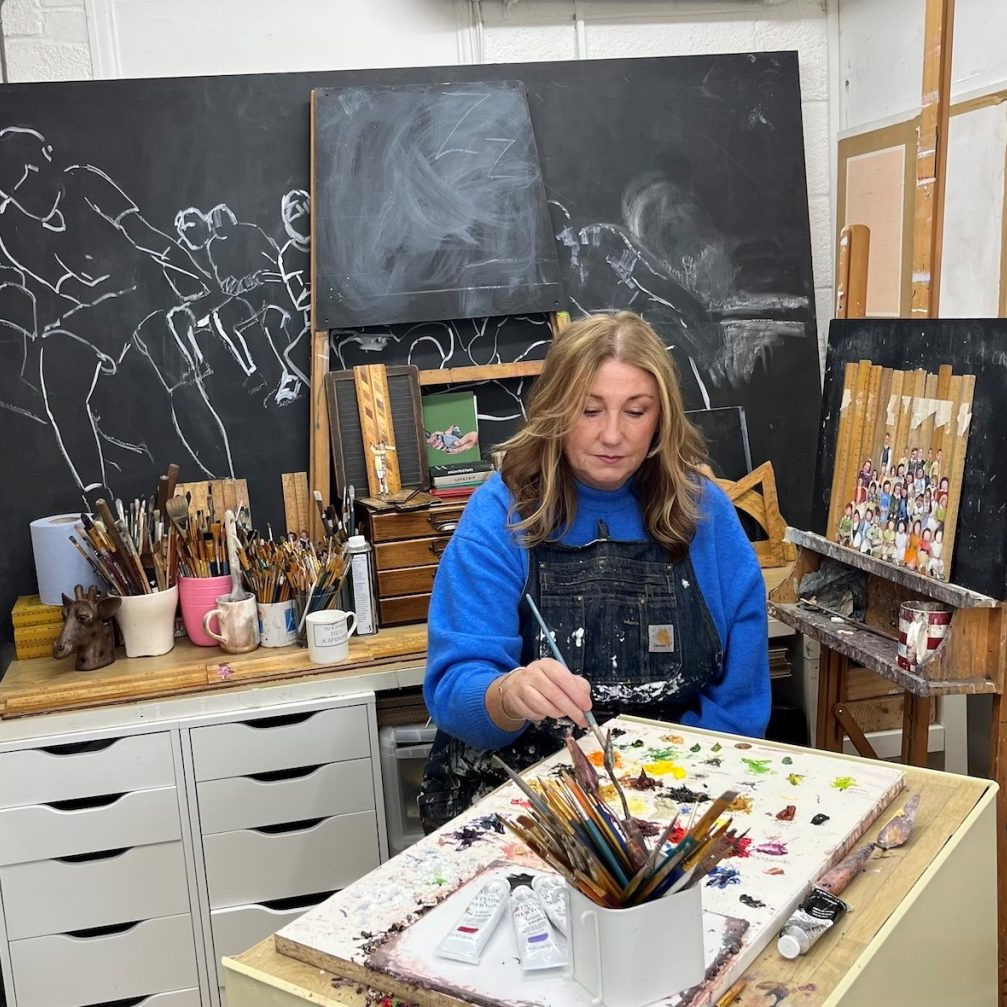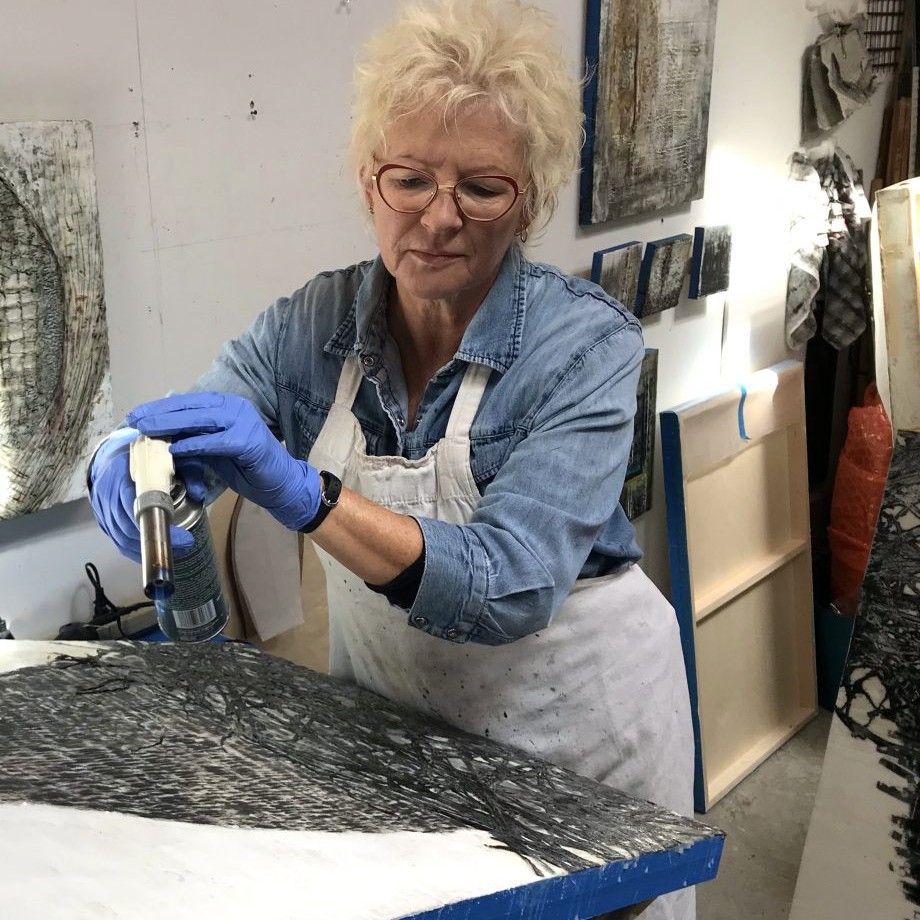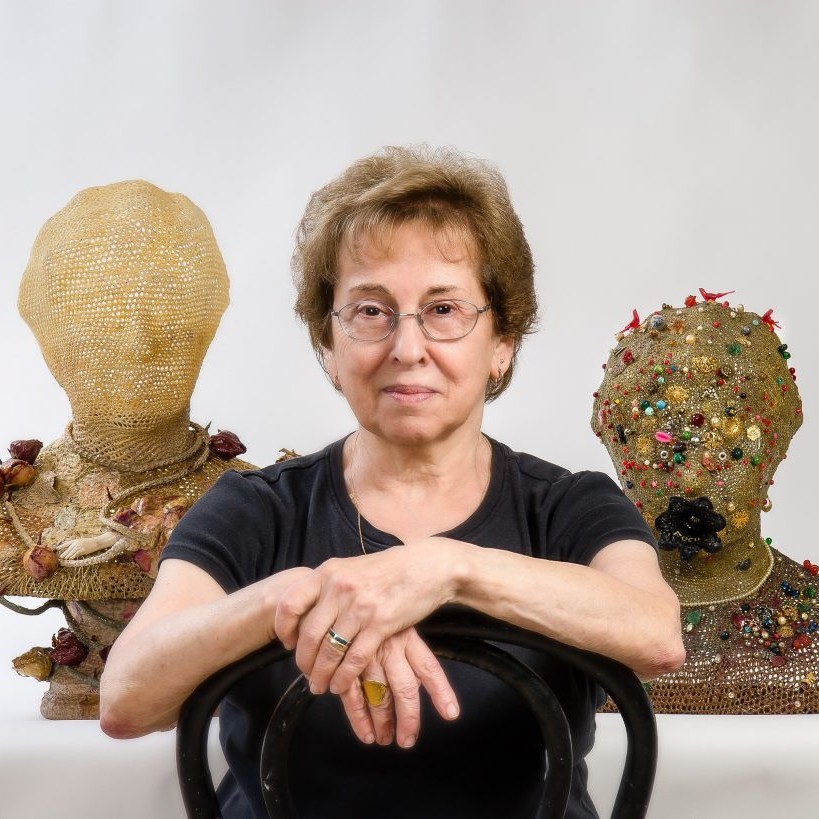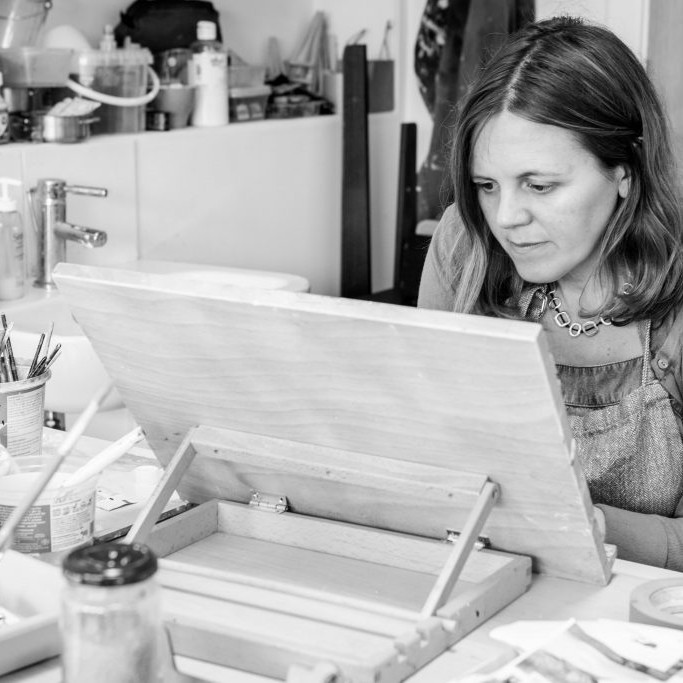Ryder Richards Mixed Medium
Texas provides a contradictory set of values, which promotes a flexible mind. I guess, what I mean is that duelling dichotomies are abundant: Texas believes in religion and guns, proudly valuing rugged, violent individualism equally with Jesus and good manners. ~ In a more practical sense Texas affirms a “go-getter” attitude, in which you are praised for boot-strap endeavours. So when a couple friends and I started the RJP Nomadic Gallery driving and exhibiting across the state we were welcomed and applauded. There is a tendency to make your own scene here, to become what you want to see. And, it is relatively cheap to live and have a studio here.
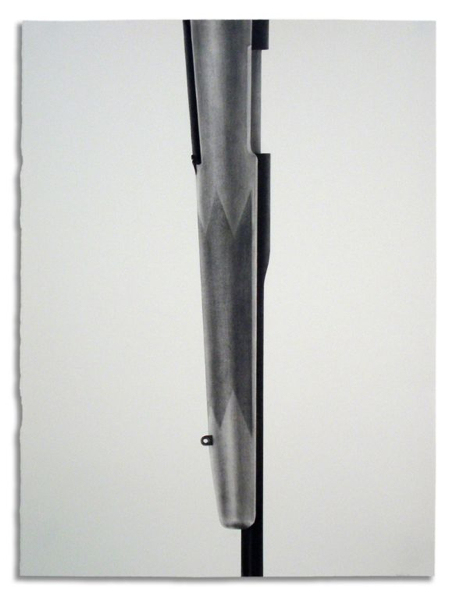 270 Winchester, 2011, 30’’x22’’ Graphite on paper
270 Winchester, 2011, 30’’x22’’ Graphite on paper
How were you able to add your artistic interpretations, through your time at Richland College in Dallas?
While at Richland I ran the art galleries, which allowed me to curate thought provoking work into an institutional space, treating it more as an alternative, experimental venue. The benefit of working with so many artists is that I made many friends, I had a way to help artists, and I expanded my own ideas of what art can be and how it can function. If you can put yourself in a position to help others you find that you are inadvertently helping yourself and you stay tuned-in to the scene.
Expand on your thoughts on the importance of collaboration with other artists?
If you hole up in your studio you might make some great work, but I had to ask myself: what would be the end result? I have thought, on-and-off, that an art life would be an exciting life exploring new ideas. But, I often find myself stuck, thinking it is about making objects. To break this tendency to fetishize the object or get stuck in one set of ideas, one way of making I challenge myself to work with others, which is often much more fun. I find myself engaging, flexing, and constructing more exciting ideas. Part of this is the power of dynamic conversations with peers, cajoling my process into alignment or to buttress other, foreign practices.
Discuss how you constantly use new and unusual materials in your art work?
Ha! Well, I think it started when I was making drawings about guns and decided to use a material more meaningful than graphite, so I started using gunpowder and lighting it on fire. During this time I joined Culture Laboratory Collective and I made a rule for myself that I would explore new ideas and materials with every exhibit, and not use gunpowder. By implementing these rules it forced me to be more creatively open until it has eventually become a facet of my practice to explore different methods of making.
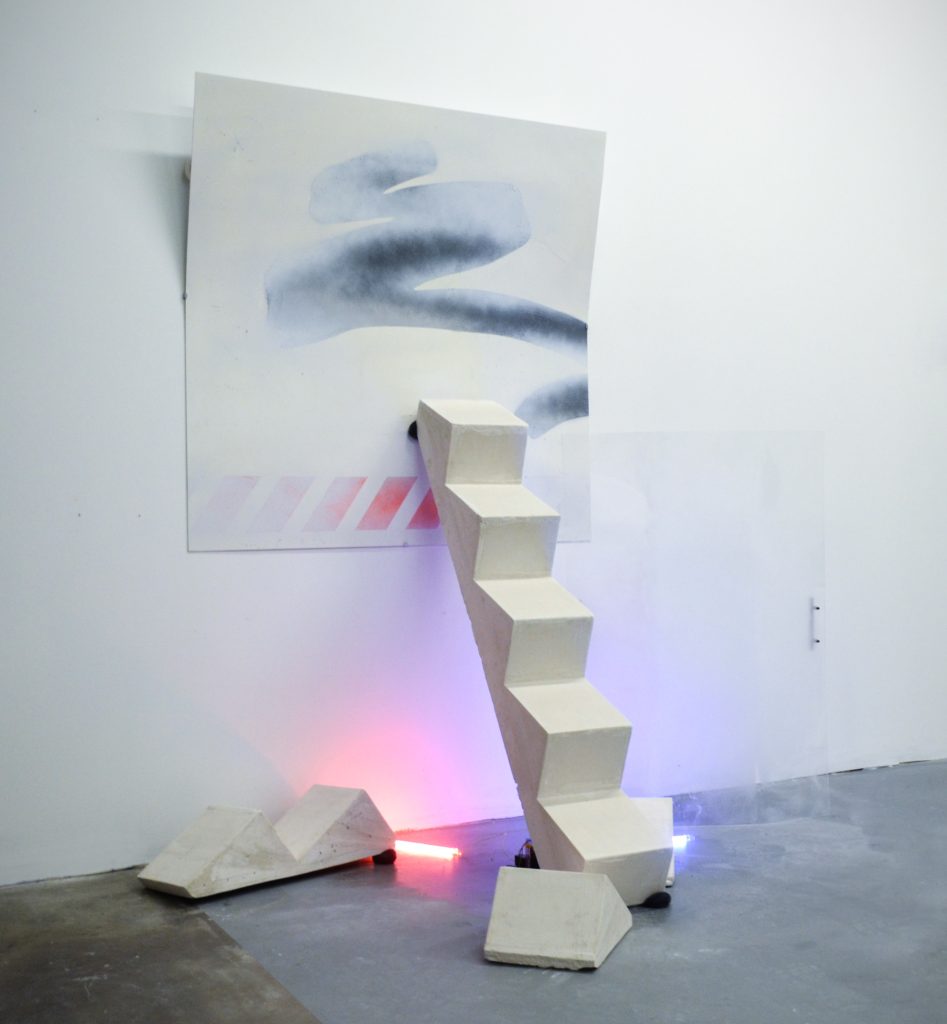
‘Pinned’ 2015, 82’’x52’’x52’’ Lights, battery, blaster, baseballs, balloons,acrylic shields,plastic, acrylic paint.
You use a very unusual material, Gunpowder expand how this came about and the way you use it?
I am often asked if I got the idea from Chinese artist Cai Guo-Qiang, who also uses gunpowder, but I first came across the idea through Ed Ruscha drawings where he was rubbing gunpowder, not igniting it. ~ At the time I was interested in Southern symbols of masculine culture, both through cinema and my own experiences. I decided that, conceptually, I wanted the work to be richer, more complex and powerful.
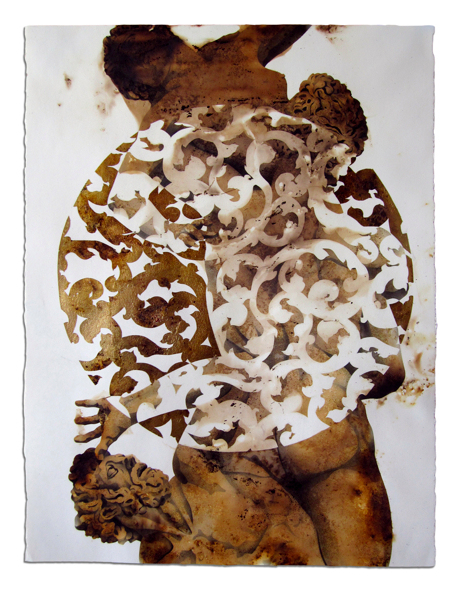 Pleasure Principle 11, 2011, 30’’ x 22’’ Gunpowder, graphite on paper
Pleasure Principle 11, 2011, 30’’ x 22’’ Gunpowder, graphite on paper
I essentially make a black and white drawing, spreading gunpowder over certain areas, compress it, and ignite it. The resultant mini-explosion singes the paper with heat and chemicals. By igniting the gunpowder on paper there is a moment of extreme risk where the act of creation is also an act of destruction that can easily destroy drawing. The process is about precise control of powerful elements, similar in concept to how gunpowder in guns is used.
Do you feel that it is a controversial material to use?
Not really. I can see that other people may find it controversial, but in my culture it is simply innovative. More subversive is my imagery of double rifles with a negative space phallus, and the use of rifle etchings to echo interior design floral patterns, as if all of this violence is so subliminally ingrained that we cease to see it and are instead seduced by it. Another piece looks like a mandala, but shows a shell casing surrounded by sperm. The fact that it is made with gunpowder adds a level of technical, conceptual innovation, but really I am questioning the conflated acceptance of beauty and embedded replication of violence in our culture. That is the controversy that I want considered.
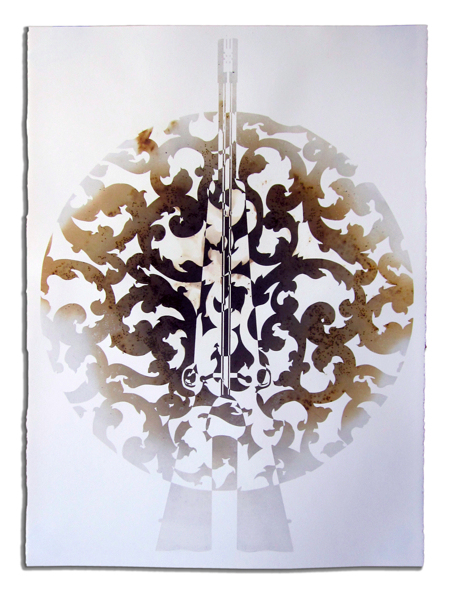
‘Disruption 11:Void’ 2011, 30’’ x 22’’ gunpowder and graphite on paper
How do you describe your art – Installations, sculptures expand on this?
Well… I make installations, paintings, drawings, and sculpture with the occasional video/sound piece or computer programming thrown in. I would say I am a bit of a conceptual artist, where the idea drives the creation of the object, and thus the materials.
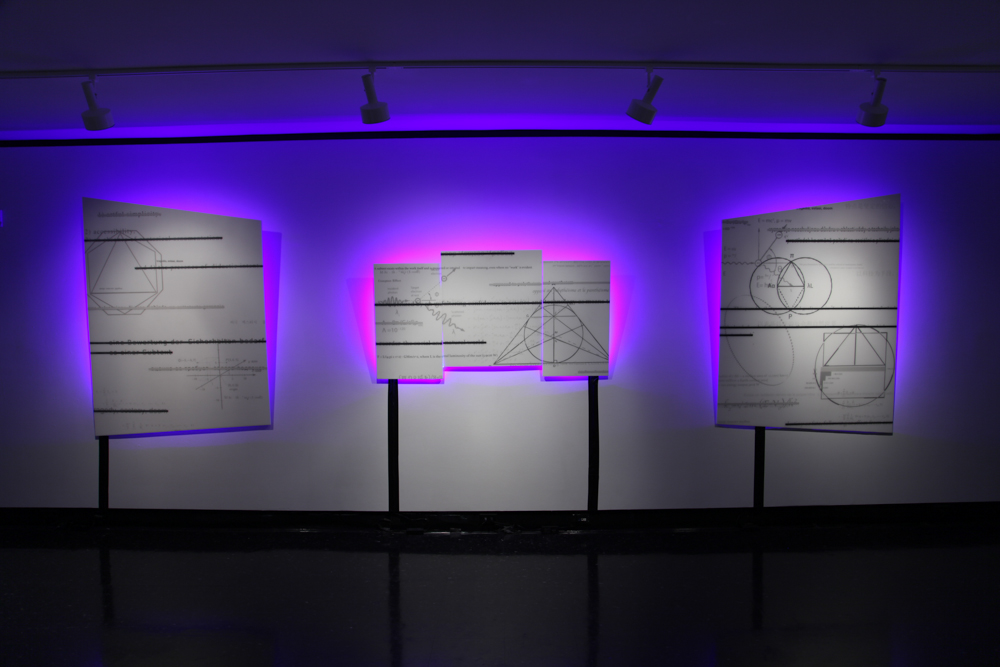
“The Idyll’ 2015, Lawndale Art Centre, Houston
In my last solo show, The Idyll, I built out the walls of the gallery to echo the shape of the Rothko chapel, and built an interactive pulpit/sound machine surrounded by small, cast platonic solids. There were several drawings on the walls, several painted panels either on the wall or acting as free-standing sculpture to mimic the monumentality of high-modernism. I tend to build out a space, which I consider sculpture and installation, allowing it to alter the viewers experience and provide its own context within the space. During the Dallas Biennial 2014 I created a temporary gallery inside a warehouse called I Could Love You Less.
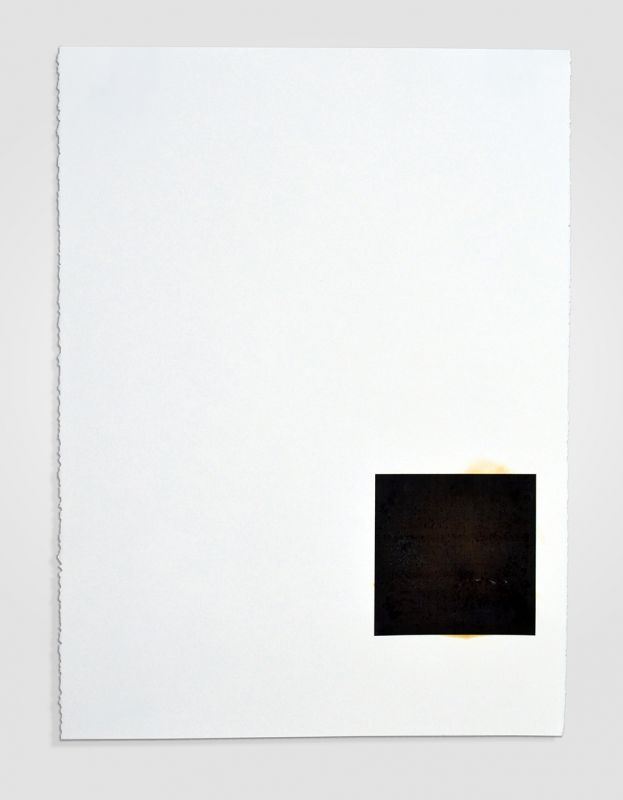
‘I Could Love You Less’ 2014, 30’’ x 22’’ Pigment, gunpowder on paper
I only put one minimal drawing in it and cut a hole in the wall that was glowing blue, sort of a poor-man’s James Turrell. Behind the temporary gallery I had several works wrapped up in plastic on palettes. The wrapped art served as sculptural props referencing my history and the invisible labour of high-modernist gallery aesthetics.
I also made a piece, Obligation, from a mirror-ball circling a paint can on astro-turf. This type of piece is kinetic and sculptural, but takes on an installation quality when the light is reflected across the space. It is a rather simple, but dynamic piece, that hovers between ready-made, sculpture, and installation.
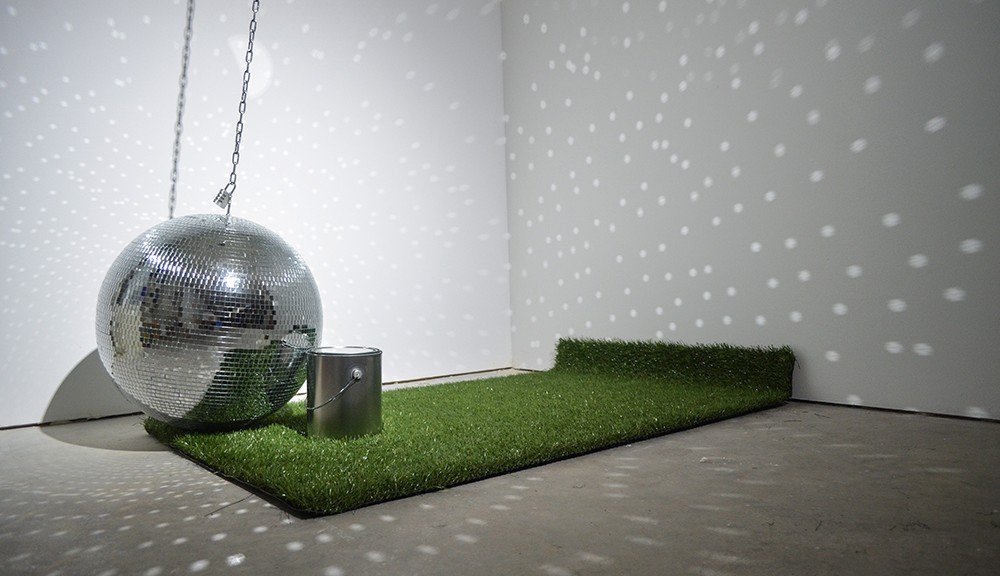
‘Obligation’ 2014
What are your thoughts on the need to have a label for the type of art, artists do?
It kind of cracks me up. Seriously. I have two degrees in painting, so I should be a painter, but I only occasionally make paintings. My recent “painting,” Pinned, features cast plaster stairs, plastic, lights, and baseballs.
When my wife is asked what kind of art she makes or what kind of material she uses she says “Yes.” We simply don’t think about labels anymore and all materials are fair game. Recently I have even done performance art that is actually drawing at Blue Star Museum in San Antonio, Texas: Stance of Contemplation.
You have had a residency every year since 2008 what has come from two of these that has given you particular improvements in your work?
My residency in Germany was great. It reaffirmed my love for drawing, which was originally rekindled with my 2008 Vermont Studio Center residency. Occasionally, we become accustomed to tools and specific work environments, and I love that a residency can strip away that complacency, leaving us with a shortage of comfort which causes us to reconsider our practice, or in this case, my identity linked to a gun-culture state.
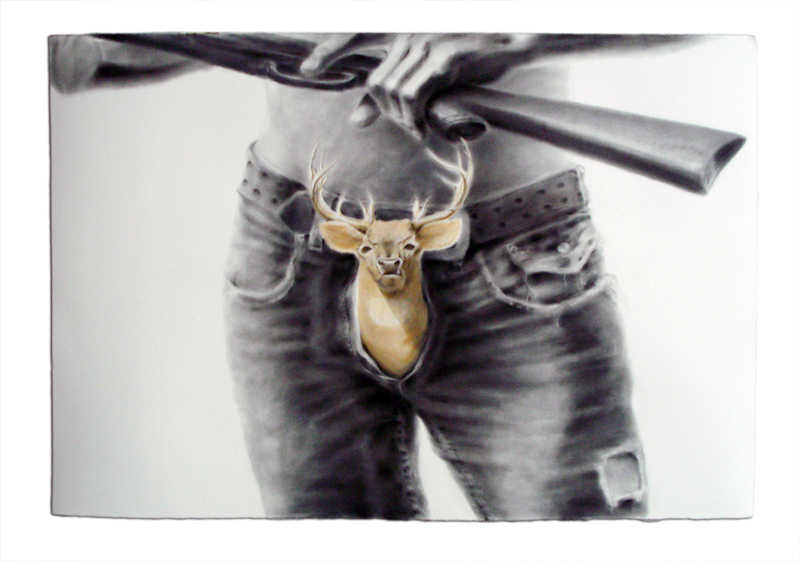
‘Impossibility of defeat; Buckshot’ 2009 30’’x 40’’, Graphite and acrylic on paper
The second residency that really changed my practice was Roswell Artist-in-Residence Program in 2012-13.
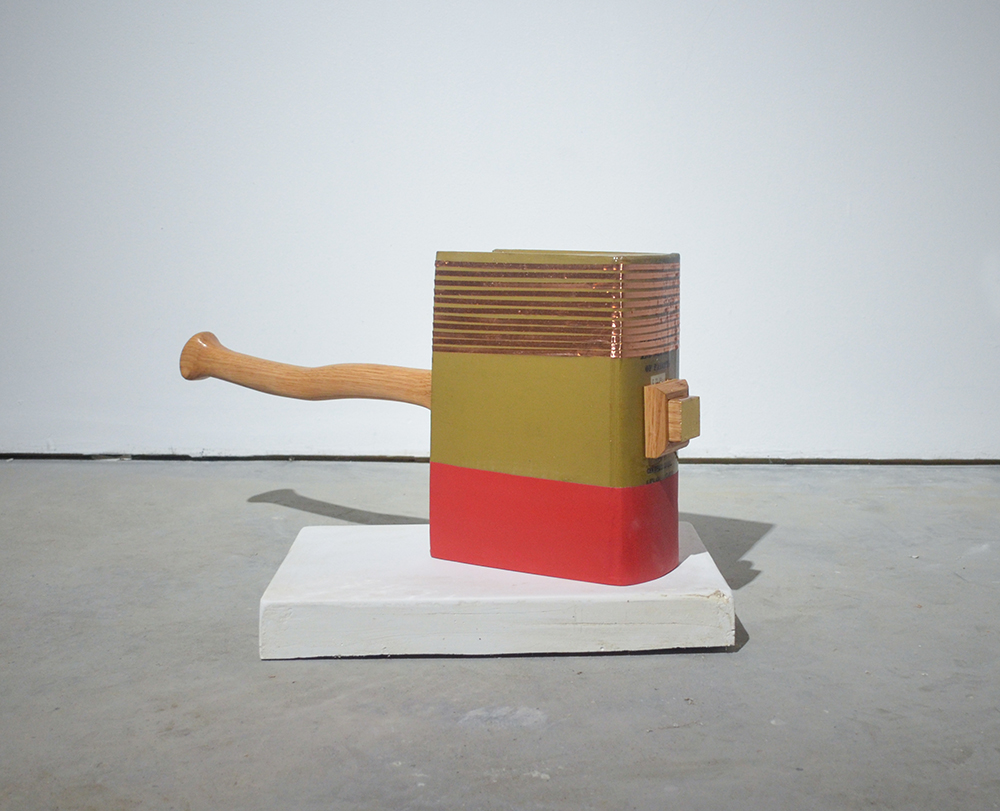
‘The Cube:Wood, 2013, 10’x10’x10’ Acrylic, wood, pedestal
I had a full year with a house and studio. During that time I started by referencing classical Italian sculpture, making flattened wood sculptures with scroll-work and gunpowder: sort of reconsidering America’s billboard signage versus the beautiful, violent three-dimensional propaganda art of the renaissance. By the time I was leaving the residency I was making minimal installations, drawings, and art actions. It was a time to grow and stretch as an artist, and I tried to make the most of it.
How do you decide which residencies to apply for?
It is often word-of-mouth. If I have a friend who enjoyed it, or if it is highly regarded and at least partially funded, I consider it. I think a lot of it has to do with scheduling. Not everyone can leave a job for a year, or even a month. I wish I had some really sage advice for you, but in the end every residency is what you make of it. Some may have better resources or reputation, but if you make great work and meet cool people during any residency then it did its job.
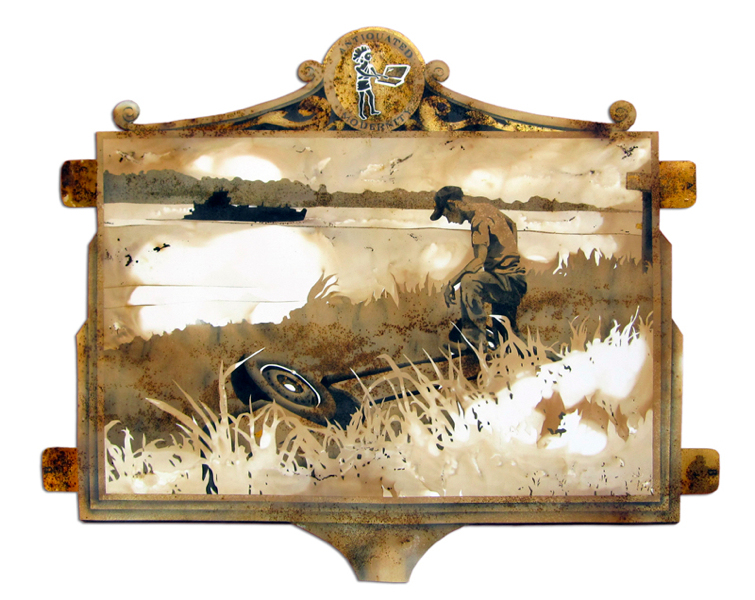
‘Antiquated Modernity:Besmirched. 2012, 30’’ x 40’’Gold leaf, graphite, gunpowder on cut paper.
As you have been so successful in acceptancy for residency can you give some advice for other artists who would like to be accepted?
I usually target my projects to the location. For instance, in Roswell I made work about the South West and I opened and ran an art gallery inside the studio to bolster social interaction with the residency. In Germany I made work about Texas stereotypes, which was exotic for them. In Kentucky I made work about the relationship between the river and city. ~ Why go to a distant location if you are not willing to let it influence you and your work? A residency, for me, is about engaging the place I am going, generating new thoughts related to the area and people.
Expand on your 2015 Solo exhibition ‘a thing of this world’
The development
I have studied gun culture in the South, Utopias, and how governmental redaction related to UFOs helps spawn conspiracy theory. Most of my work seems to be about revealing or playing with hidden, subliminal, or institutional bias. Recently I have been looking at police, riots, and other forms of civil disobedience. Initially shocked by the news I began to read and study, going from theories on “power” to a manual for “How to deal with Intractable Conflict.” Then, I think I read some sci-fi, a book on the Freikorps, and texts on object-oriented-ontology, occasionally talking to former police officers and military people.
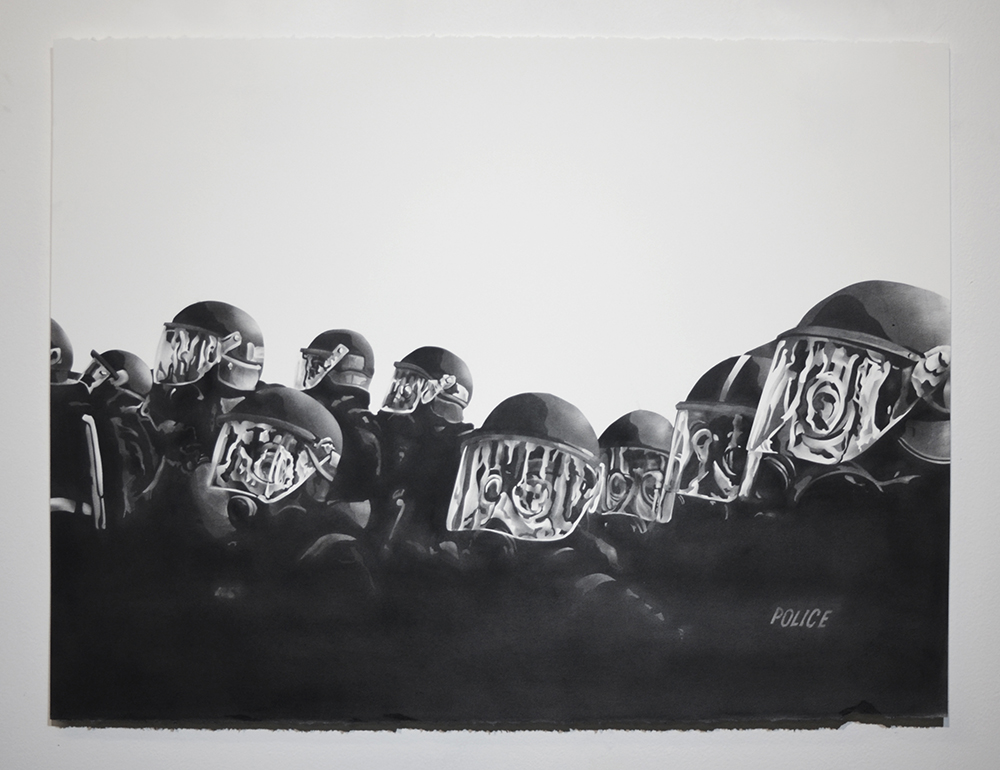
Shield:Intractable Conflict 111, 22’’ x 30’’ 2015, Graphite, pigment on paper
I am attempting to come to grips with the dynamic of citizens who ‘police’ other citizens and the increasing mistrust between the two groups. Looking at the tools and visual symbols police embody the “predatory silhouette” aesthetics, dehumanizing their appearance and often aggressively over-reacting. The populace will no longer comply willingly to an institution they do not trust or respect, people they do not believe honestly wish to ‘serve and protect’, causing an escalation as situations are more often handled with force as police demand compliance.
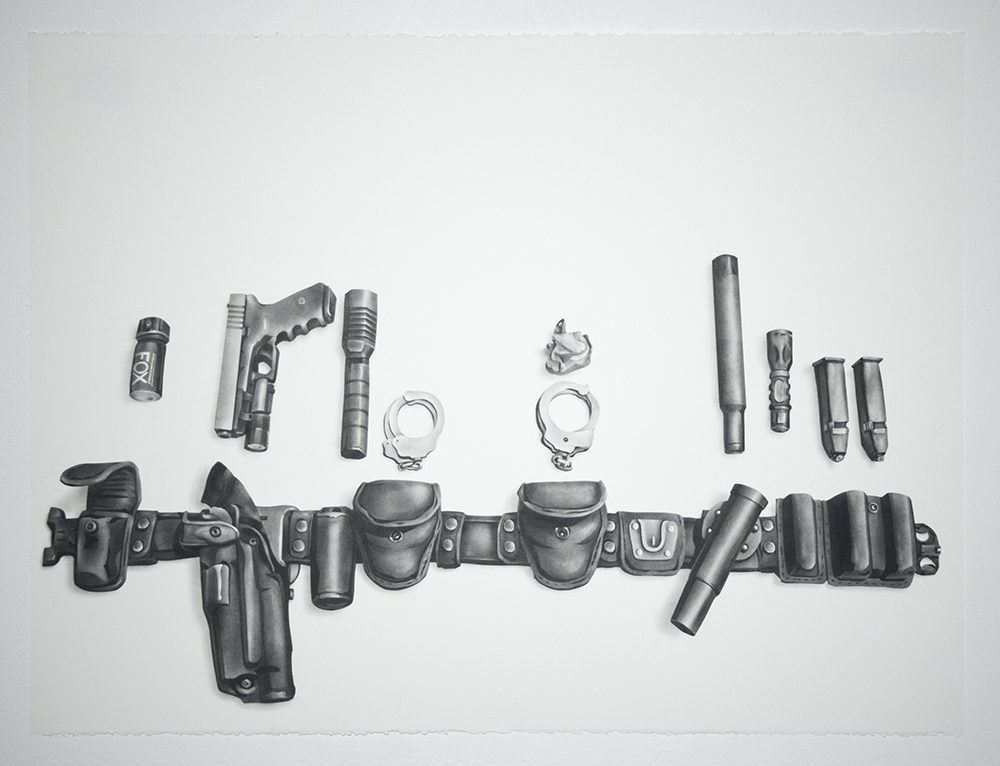
‘Shield: Utility’ 2015, 22’’ x 30’’ Graphite, pigment on paper
For the exhibit I have pieces dealing with various methods for coping with this reality: the tools used (police utility belts and home-made riot shields), academic knowledge (texts), to the aftermath of a riot (burning tires).
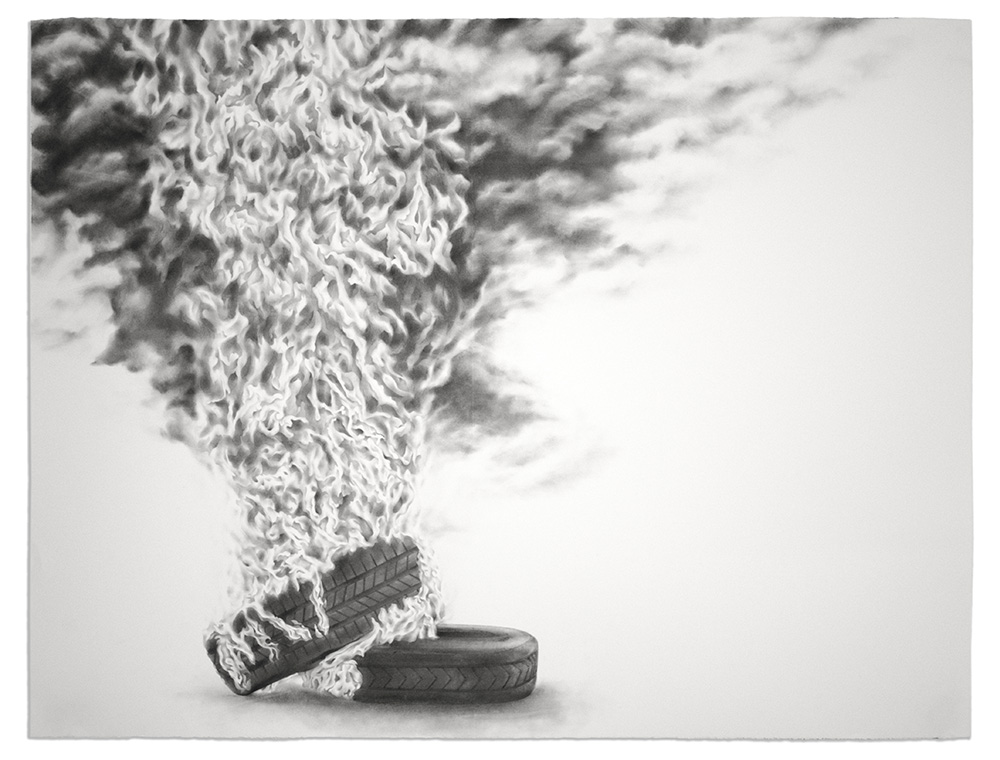
Shield: Burn, 2015, 40″x60″ graphite and lamp black on paper
I am currently making a Kevlar hoodie for the exhibit and a tower of car batteries and lights.
The size of the exhibition and the amount of work needed
The exhibit will be relatively small as PA Gallery is a fairly small, alternative space, roughly 12’x16’. They are interested in experimental research-based work and really encouraged me to think about an installation, so I will probably build a few sculptural elements on site, such as cast plaster stairs, make a mural, and install 4 or 5 wall pieces. At least that is the plan now, but I may need to edit pieces out of the show down once I am on site.
The importance of it being in Brooklyn rather that in Texas
I would love to say that the work will be better received in Brooklyn, leading me to great success and fame. But primarily I developed the work considering some issues related to New York, such as the ‘stop-and-frisk’ policy, Eric Garner and the revenge shootings. However, I think the work is universal in many ways, considering such large social dynamics.
Tell us about The Art Foundation that was established in 2012 and the role you take and what the Foundation has given back to you?
The Art Foundation is a group of Dallas-based artists who got together to curate a show, wanting Dallas to host exhibitions that could be considered internationally compelling rather than merely regionally relevant. The interesting thing is that we received a lot of regional attention with the Nasher Sculpture Center accepting one of our projects into their permanent collection, and the Dallas Museum of Art asked us to curate an exhibition of local artists. We also held a discussion on public art, worked with an artist from San Diego on a Dallas project, and created an exhibit at The Reading Room based on Jonathan Lethem’s “Chronic City.”
I think my role in the group alters according to the project. Sometimes it is idea generation, sometimes I take on tasks of building and doing, and often I end up talking too much. The benefit of the collaboration is the collaborators, who are much more sophisticated, tasteful, and smarter than I.
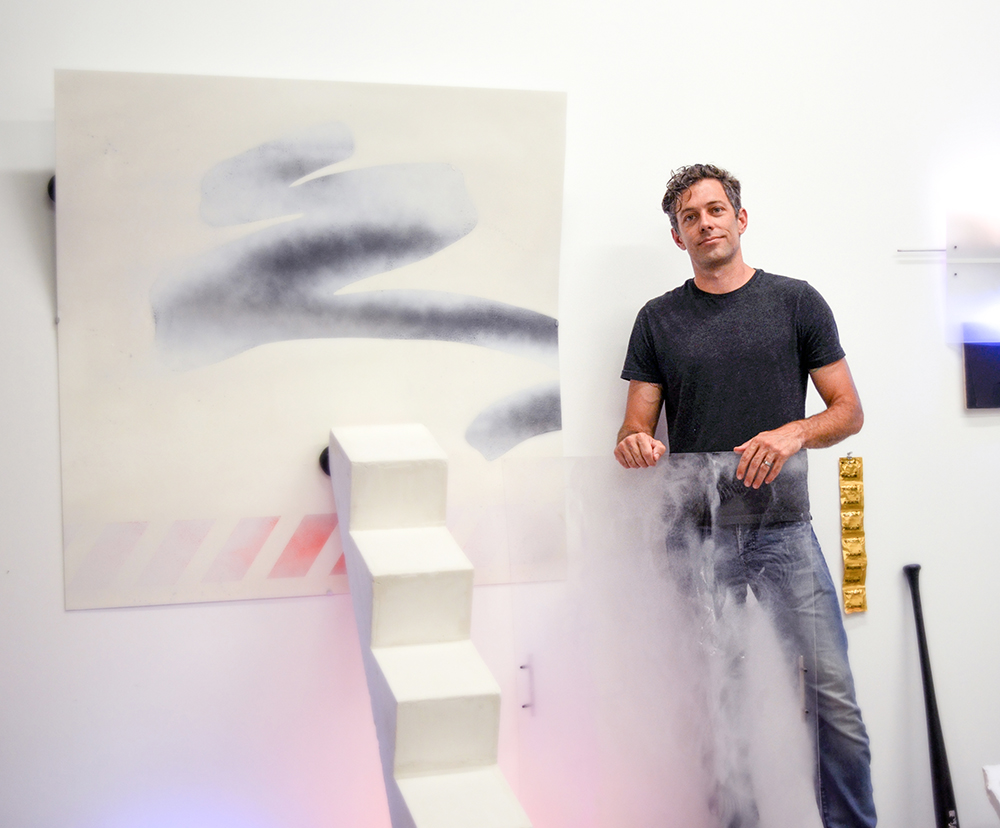
Contact details.
Interview by Deborah Blakeley, July, 2015
Think a colleague or friend could benefit from this interview?
Knowledge is one of the biggest assets in any business. So why not forward this on to your friends and colleagues so they too can start taking advantage of the insightful information the artist has given?
Other artists you may be interested in:



